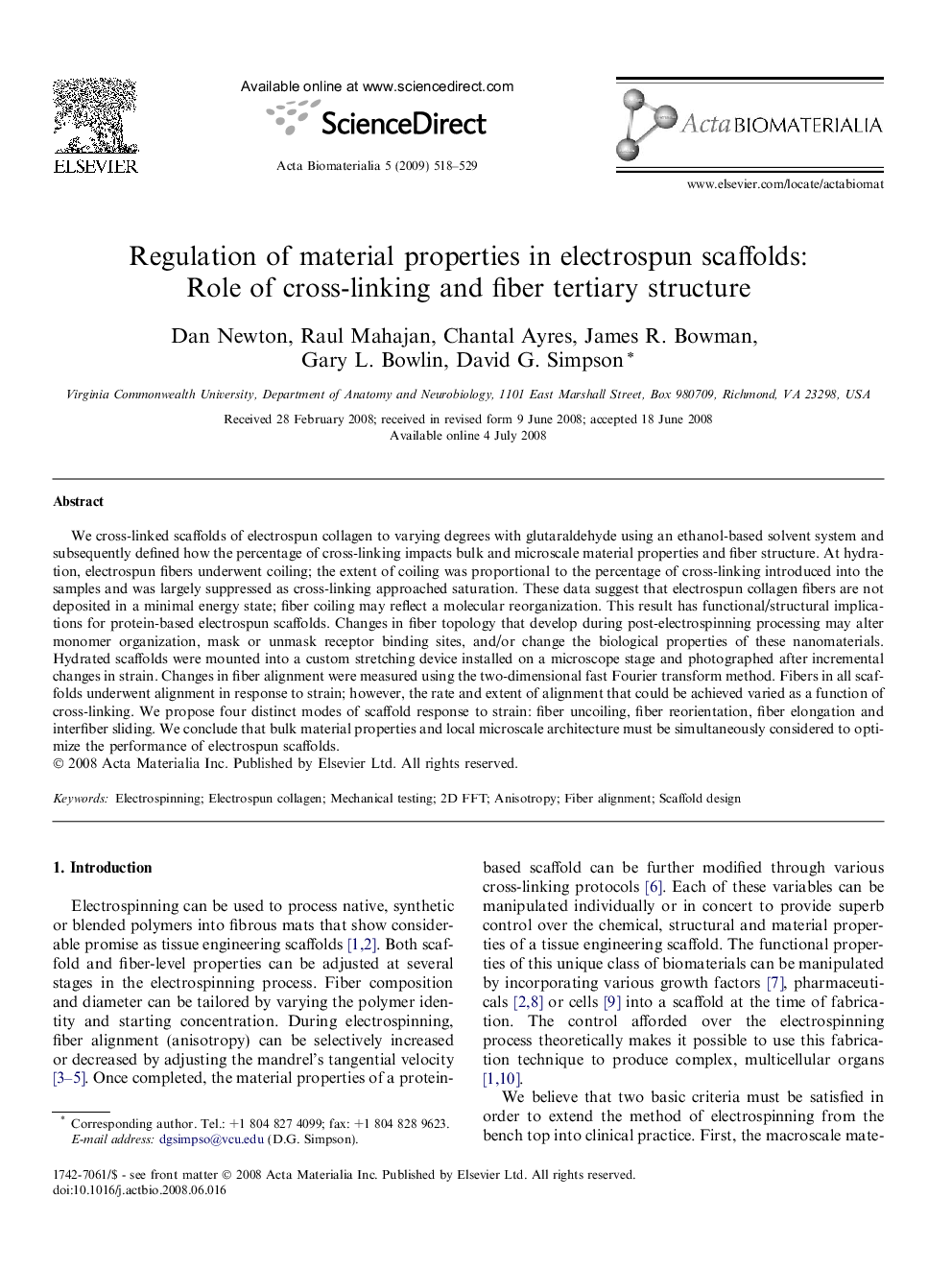| Article ID | Journal | Published Year | Pages | File Type |
|---|---|---|---|---|
| 2392 | Acta Biomaterialia | 2009 | 12 Pages |
We cross-linked scaffolds of electrospun collagen to varying degrees with glutaraldehyde using an ethanol-based solvent system and subsequently defined how the percentage of cross-linking impacts bulk and microscale material properties and fiber structure. At hydration, electrospun fibers underwent coiling; the extent of coiling was proportional to the percentage of cross-linking introduced into the samples and was largely suppressed as cross-linking approached saturation. These data suggest that electrospun collagen fibers are not deposited in a minimal energy state; fiber coiling may reflect a molecular reorganization. This result has functional/structural implications for protein-based electrospun scaffolds. Changes in fiber topology that develop during post-electrospinning processing may alter monomer organization, mask or unmask receptor binding sites, and/or change the biological properties of these nanomaterials. Hydrated scaffolds were mounted into a custom stretching device installed on a microscope stage and photographed after incremental changes in strain. Changes in fiber alignment were measured using the two-dimensional fast Fourier transform method. Fibers in all scaffolds underwent alignment in response to strain; however, the rate and extent of alignment that could be achieved varied as a function of cross-linking. We propose four distinct modes of scaffold response to strain: fiber uncoiling, fiber reorientation, fiber elongation and interfiber sliding. We conclude that bulk material properties and local microscale architecture must be simultaneously considered to optimize the performance of electrospun scaffolds.
